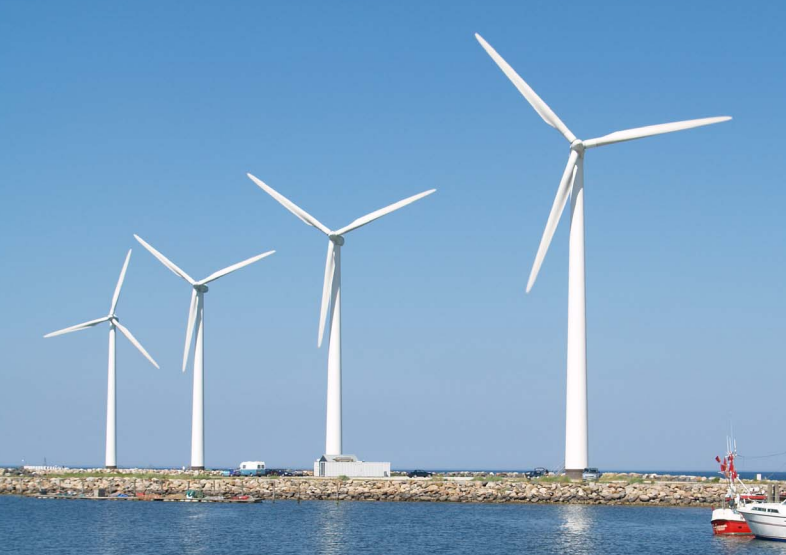 Danish national research institute RISØ, a world leader in setting standards for the modern wind industry, has released a report on power quality in diesel-wind microgrid-based hybrid systems. RISØ measured performance using a Danvest Hybrid Power Plant running with a Vestas 600kW wind turbine. The institute tested voltage and frequency fluctuations during continuous operation as well as during transitions between different states of operation. The report concludes that frequency and voltage vary very little, both in continuous operation and during transients and shifts between operation modes, and found the quality of the system to be within European standards.
Danish national research institute RISØ, a world leader in setting standards for the modern wind industry, has released a report on power quality in diesel-wind microgrid-based hybrid systems. RISØ measured performance using a Danvest Hybrid Power Plant running with a Vestas 600kW wind turbine. The institute tested voltage and frequency fluctuations during continuous operation as well as during transitions between different states of operation. The report concludes that frequency and voltage vary very little, both in continuous operation and during transients and shifts between operation modes, and found the quality of the system to be within European standards.
Power quality is particularly critical for autonomous power systems in off-grid areas. For systems with a high penetration of renewable energy, power quality must be consistent during periods of large variations in the output from the renewable component as well as when the renewable component is cutting in or out.
The Danvest system is designed to alleviate concerns about power quality, and the company (a new partner to HOMER Energy), welcomed the rigorous testing conducted by RISØ. Danvest is a complete power plant based on low-loading diesel generators, which can operate with a 100% penetration of either wind or solar/PV or combinations thereof. The system is fully automated and provides priority to the renewable components. The diesel gensets have the ability to go into low-load and reverse mode while balancing demand and production at all times. The Danvest system is able to clutch out its diesels during periods of high winds. During such periods, the wind turbines (or solar/PV) act as the only power supply to the microgrid while the Danvest system maintains grid stability and creates reactive power.
The RISØ report describes the impact on power quality operating with diesel only, with diesel in parallel with wind, and during clutch-out and stop of the diesel engine. During periods of 100% renewable operation – in this case a wind turbine – the alternator remained connected to the grid and the power balance was controlled by the Danvest dumpload system. Transitions between the various operating modes – i.e. during cut-in and cut-out of the wind turbine – were also investigated. The study results are even more impressive considering that measurements were conducted with an “old-style” fixed pitch wind turbine.
Siemens Wind Power has done similar testing using a Danvest system to operate its large 3.6MW invertor-based wind turbine with the same positive result. Siemens and large Danish wind turbine company Vestas use Danvest systems in a variety of applications. For example, Siemens is using Danvest systems for testing of wind parks before the parks get grid-connected.
The Danvest system creates direct fuel savings of 50 to 70% per year for wind-diesel power plants and 30 to 40% for solar-diesel power plants without using storage systems, according to the company. A copy of the RISØ report can be requested from Danvest by contacting CEO Thomas Vestesen on or Sales Manager Finn Alsgren on .
